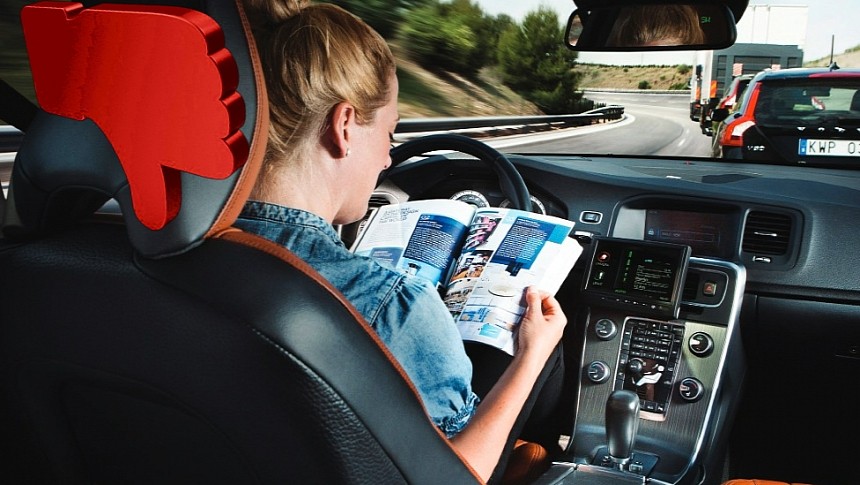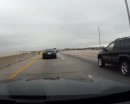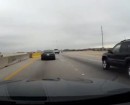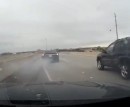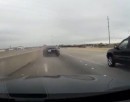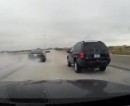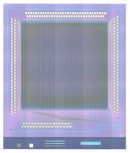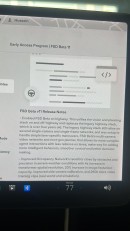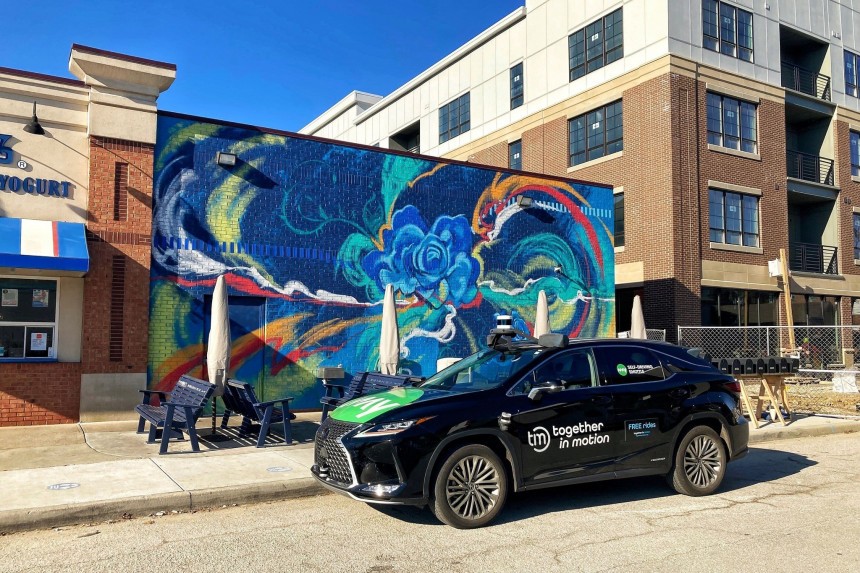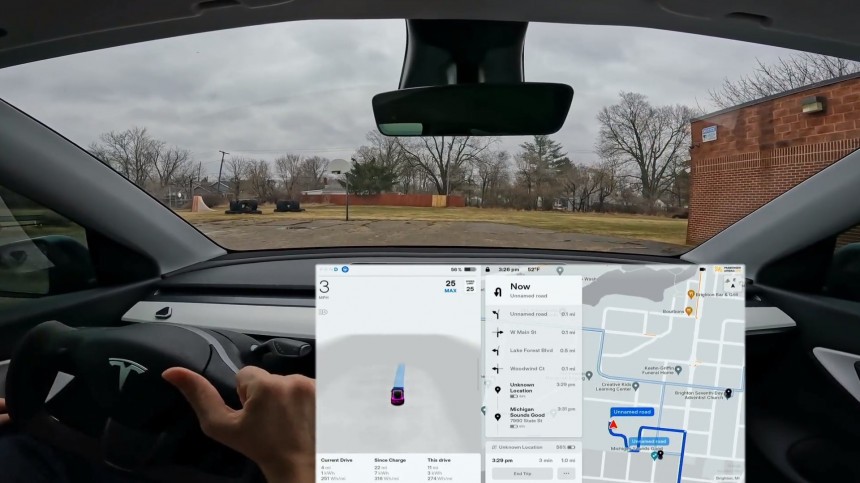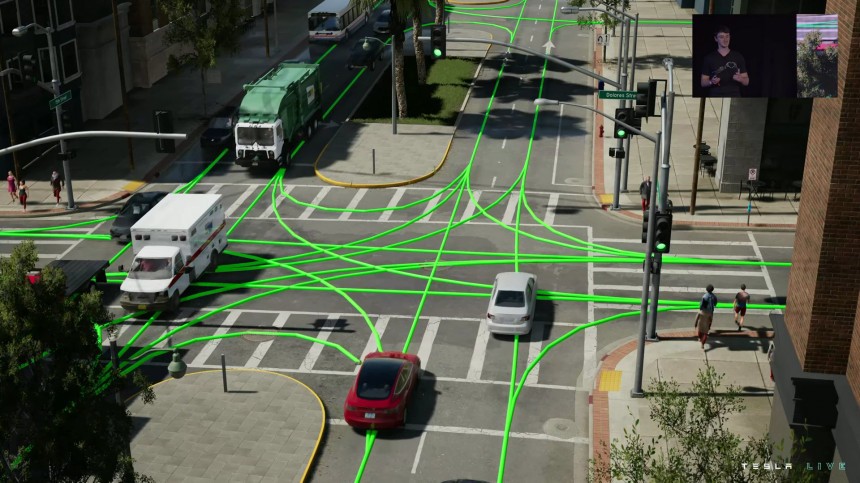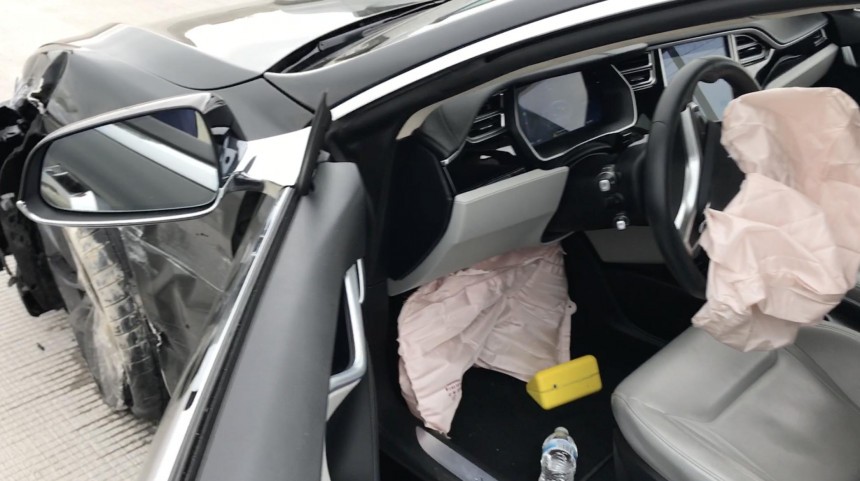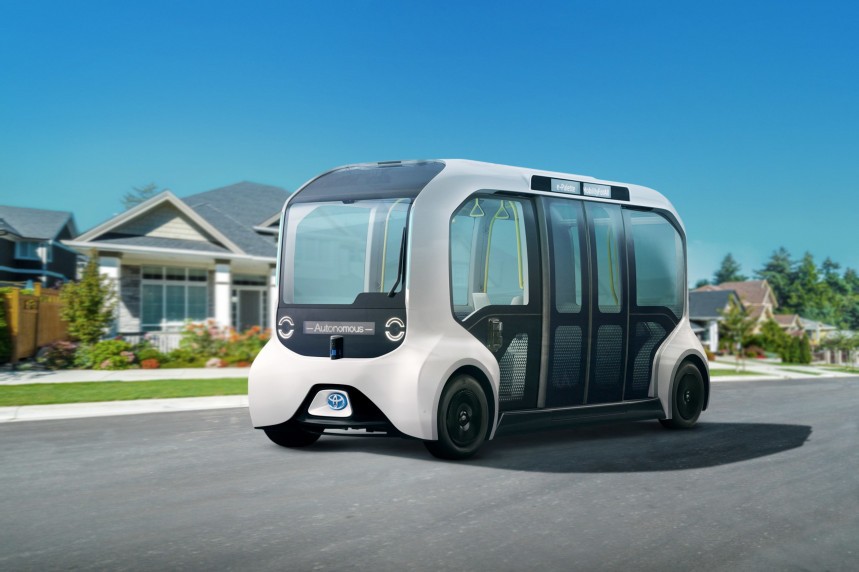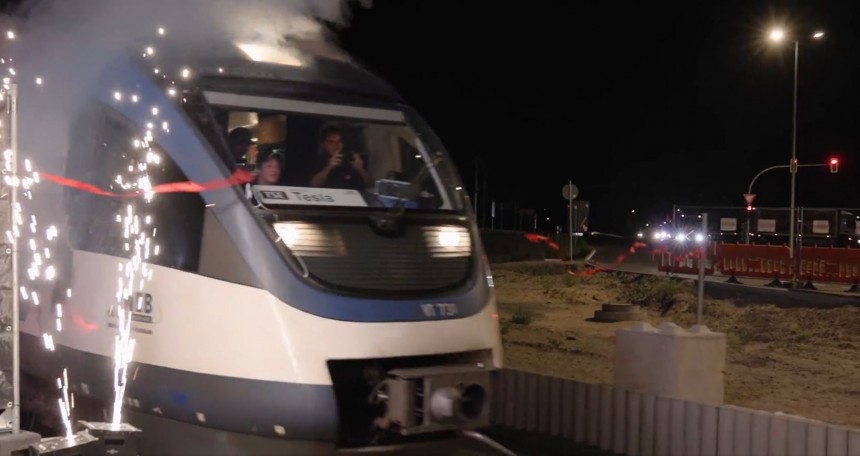Multiple technology companies, startups, automakers, nongovernmental organizations, and some public agencies are involved in the curious domain of automated driving. Somehow, we jumped from driver assistance to driver-replacing systems in a jiffy. The issue at hand is that it does not make sense to build cars for humans but not let them drive. The goal of all these organizations is anticlimactic, to say the least. We already have the solution!
If you haven't been on a cruise (pun intended) with no Wi-Fi for the last few months, then you might have heard about people potentially losing their jobs because there are some new hyped-up platforms out there that support the survival of the gig economy.
Besides, there's all this nonsensical hype surrounding artificial intelligence (AI). These language learning models (LLMs) that are so popular today can barely be called artificial because they just scrape the internet for information and spit it out packaged nicely when you ask (or prompt?) them something. Granted, some programs can do more complex tasks, but that doesn't mean they are in any way intelligent. They depend on what the humans are doing behind the scenes.
For now, all these LLMs are just glorified Google search engines that use free information to answer some questions. Pay a fee, and they might do more things thanks to plug-ins that other people also made.
If AI becomes capable of replacing most of the artists, designers, photographers, video editors, content creators, stock portfolio managers, assistants, and maybe even teachers or family doctors, then what's the point? If most of the things we see, read, and hear are provided by a machine that can only interpret human knowledge minus feelings, then why rush? Are we all going to take advice from a machine?
Moreover, does it make sense to concentrate so much knowledge and so many abilities into a couple of fancy robots that are controlled by a handful of companies?
But while I welcome progress and believe that the faster we move forward, the better it will be for all of us, there's one thing I just cannot wrap my head around – rendering drivers useless.
Take the most well-known example: Tesla. The brand has been trying to make Full Self-Driving a thing for years. What's the goal? Making all cars autonomous? If that's manageable within a respectable timeframe, then why would people even bother to buy a Tesla when all cars can drive themselves?
But maybe Tesla isn't the best example in this respect. The brand's CEO made a ton of wild promises regarding robotaxis and its SAE Level 2 advanced driver-assistance software that's trying hard to evolve without needing radars, LiDAR, or ultrasonic sensors (USS). After all those wild predictions, I can't blame anyone for not trusting Tesla.
It's better to look at companies like Cruise, Waymo, or Zoox. They are the ones spearheading this domain. Admittedly, Cruise is currently dealing with some issues and had to halt operations for a while, but it's among the few entities that proved cars could roam city streets without having someone behind the steering wheel. It also had the courage to run ads saying "humans are terrible drivers."
The California Department of Motor Vehicles (DMV) announced after the incident that it was suspending Cruise's testing permits. Three days later, Cruise decided to apply the brakes on all its driverless operations as a precaution. It said the goal was to verify everything and figure out what could have happened better.
While that's certainly commendable, it also makes me wonder – what will liability look like in a scenario where the roads are filled with driverless cars?
But before trying to figure out an answer, let's look at a major car company that had the guts to assume liability – Mercedes-Benz. Its SAE Level 3 advanced driver-assistance system called Drive Pilot can absolve the driver of their responsibilities in certain scenarios. The tricky part is to meet all the requirements needed to have the system fully active and prove that it was Drive Pilot who made a mistake.
Currently, it works only in California and Nevada. Besides that, it is only available during the day (no rain!), when a vehicle is in front of a Mercedes-Benz equipped with it, and works solely on highways where the car's speed must not exceed 40 mph.
It's nearly impossible to crash in such scenarios, considering a basic adaptive cruise control system can safely keep the distance between your car and the one in front of you. It's also tracking you, so be aware of that. Not because it's creepy by design, but because it might ask you to take over at any time. Any data point that doesn't behave as expected will prompt the system to put the driver back in control.
However, it's still a success. The Germans convinced two states to allow them to deploy this system. It can now be marketed as something groundbreaking. If it really is, that's up to the consumer.
I don't intend to grill Mercedes-Benz. I believe they are among the most important and responsible innovators in this space. But there are just so, so many questions arising. Why should we have to deal with so much uncertainty? If a product is ready to hit the market, then it shouldn't come with so many limitations.
Suppose Drive Pilot becomes so good that it can drive you anywhere. In a scenario where the car runs a red light (it happened with the out-of-beta FSD V12, remember?), will the Police fine Mercedes-Benz? Will the system's "driving license" be suspended once it accrues enough demerit points? Will it have to go through traffic school? Can the regulators stop Mercedes-Benz drivers from activating their pay-to-use software if it breaks too many rules in a limited timeframe?
These are questions left unanswered for now and, frankly, are things we – the consumers – shouldn't even have to think about.
But it gets even more interesting!
They are not yet ready to reach the public and fill the city streets, but they'll eventually be left out in the wild. Can lawmakers keep up to establish the right rules that do not leave room for interpretation? Will we be ready to see nobody in the driver's seat or any dedicated space for a driver at all?
But there's even more to autonomous vehicles than replacing ridesharing vehicles and yellow cabs. These companies want to change the trucking industry, too. Aurora, Torc, TuSimple, Einride, and maybe even Tesla are on the path to automate vehicles with a gross vehicle weight rating of over 33,000 lb.
The most important question at the end of the day is: why? Why are all these brands racing to render drivers useless instead of using all the available tech to mitigate crashes and make driving more pleasant for everyone?
If the question is about making roads safer, we already have the solution – public transport. Trains, trams, and subways specifically! They can transport hundreds of people from one point to another via railways. Not only are they inherently safer, but they also require less resources use. Thus, they're greener.
If we really want to have safer roads, then the best way forward is to spend money on improving public transport that happens on predetermined paths. Even a maglev would be better than thousands of cars. Even if they are all-electric, they still use rims with rubber rings wrapped around them. Researchers found that tire particles get into the air and can cause troubling health issues for humans.
Thus, if what we collectively want is safer and greener mobility and keeping more people employed, trains, subways, and trams are the way to go. But that won't happen. Some companies have already spent billions on research and development. Naturally, they want to make some of that money back.
So, the autonomous vehicle development will continue. But I would comfortably wage that there will most likely be fewer winners than expected. Also, it's going to be very, very boring and confusing for a while.
Besides, there's all this nonsensical hype surrounding artificial intelligence (AI). These language learning models (LLMs) that are so popular today can barely be called artificial because they just scrape the internet for information and spit it out packaged nicely when you ask (or prompt?) them something. Granted, some programs can do more complex tasks, but that doesn't mean they are in any way intelligent. They depend on what the humans are doing behind the scenes.
For now, all these LLMs are just glorified Google search engines that use free information to answer some questions. Pay a fee, and they might do more things thanks to plug-ins that other people also made.
If AI becomes capable of replacing most of the artists, designers, photographers, video editors, content creators, stock portfolio managers, assistants, and maybe even teachers or family doctors, then what's the point? If most of the things we see, read, and hear are provided by a machine that can only interpret human knowledge minus feelings, then why rush? Are we all going to take advice from a machine?
Embracing the unknown?
Well, those are things we will have to deal with at some point in the near future. Technology keeps evolving at an incredible pace. Just look around – almost everything we interact with on a daily basis is, in one way or another, connected to the virtual world. Even money is supposed to become digital at some point, according to what some banks are trying out as you read these words.But while I welcome progress and believe that the faster we move forward, the better it will be for all of us, there's one thing I just cannot wrap my head around – rendering drivers useless.
Take the most well-known example: Tesla. The brand has been trying to make Full Self-Driving a thing for years. What's the goal? Making all cars autonomous? If that's manageable within a respectable timeframe, then why would people even bother to buy a Tesla when all cars can drive themselves?
But maybe Tesla isn't the best example in this respect. The brand's CEO made a ton of wild promises regarding robotaxis and its SAE Level 2 advanced driver-assistance software that's trying hard to evolve without needing radars, LiDAR, or ultrasonic sensors (USS). After all those wild predictions, I can't blame anyone for not trusting Tesla.
A couple of issues
However, let's divert our attention here for a while. Cruise is in trouble because of a non-fatal accident involving a pedestrian or, as some companies call a person walking, a vulnerable road user. That person was hit by a human driver and propelled in front of the robotaxi. The driverless vehicle "pulled the person forward" before coming to a stop.The California Department of Motor Vehicles (DMV) announced after the incident that it was suspending Cruise's testing permits. Three days later, Cruise decided to apply the brakes on all its driverless operations as a precaution. It said the goal was to verify everything and figure out what could have happened better.
While that's certainly commendable, it also makes me wonder – what will liability look like in a scenario where the roads are filled with driverless cars?
But before trying to figure out an answer, let's look at a major car company that had the guts to assume liability – Mercedes-Benz. Its SAE Level 3 advanced driver-assistance system called Drive Pilot can absolve the driver of their responsibilities in certain scenarios. The tricky part is to meet all the requirements needed to have the system fully active and prove that it was Drive Pilot who made a mistake.
It's nearly impossible to crash in such scenarios, considering a basic adaptive cruise control system can safely keep the distance between your car and the one in front of you. It's also tracking you, so be aware of that. Not because it's creepy by design, but because it might ask you to take over at any time. Any data point that doesn't behave as expected will prompt the system to put the driver back in control.
However, it's still a success. The Germans convinced two states to allow them to deploy this system. It can now be marketed as something groundbreaking. If it really is, that's up to the consumer.
Dealing with reality
Still, the liability question remains – who will be deemed guilty by Police if a Drive Pilot-equipped Mercedes-Benz causes a minor accident where nobody's hurt? The company? Will the three-pointed star brand pay for the repairs? Will it be out of its own pocket or through an insurer? Will Mercedes-Benz pay a premium to have its Drive Pilot-equipped cars covered in case anything terrible happens?Suppose Drive Pilot becomes so good that it can drive you anywhere. In a scenario where the car runs a red light (it happened with the out-of-beta FSD V12, remember?), will the Police fine Mercedes-Benz? Will the system's "driving license" be suspended once it accrues enough demerit points? Will it have to go through traffic school? Can the regulators stop Mercedes-Benz drivers from activating their pay-to-use software if it breaks too many rules in a limited timeframe?
These are questions left unanswered for now and, frankly, are things we – the consumers – shouldn't even have to think about.
But it gets even more interesting!
Special autonomous vehicles and more
Cruise, Waymo, and Zoox have robotaxis that do not come with a steering wheel. They are developed especially for a world in which the likes of Uber and Lyft don't require human drivers with whom to share their ride revenue any longer.But there's even more to autonomous vehicles than replacing ridesharing vehicles and yellow cabs. These companies want to change the trucking industry, too. Aurora, Torc, TuSimple, Einride, and maybe even Tesla are on the path to automate vehicles with a gross vehicle weight rating of over 33,000 lb.
The most important question at the end of the day is: why? Why are all these brands racing to render drivers useless instead of using all the available tech to mitigate crashes and make driving more pleasant for everyone?
If the question is about making roads safer, we already have the solution – public transport. Trains, trams, and subways specifically! They can transport hundreds of people from one point to another via railways. Not only are they inherently safer, but they also require less resources use. Thus, they're greener.
Thus, if what we collectively want is safer and greener mobility and keeping more people employed, trains, subways, and trams are the way to go. But that won't happen. Some companies have already spent billions on research and development. Naturally, they want to make some of that money back.
So, the autonomous vehicle development will continue. But I would comfortably wage that there will most likely be fewer winners than expected. Also, it's going to be very, very boring and confusing for a while.
